
[252] Passiflora caerulea, Bluecrown Passionflower
Introduction
Passiflora caerulea, the Bluecrown Passionflower, is a climbing plant cultivated as a garden plant with spectacular blue flowers.
Of course, all the species of Passiflora are called Passionflowers and Passiflora caerulea may also be called the Common or Blue Passionflower.
Taxonomy
Kingdom – Plants
Division – Vascular Plants
Class – Angiosperms (Flowering Plants)
Order – Malpighiales
Family – Passifloraceae
Subfamily – Passifloroideae
Tribe – Passifloreae
Genus – Passiflora
Scientific Name – Passiflora caerulea
Cultivars are available.
Name
This is a bit of a long story. It is to do with Christian theology, and you can leave this section out if you want.
The Biblical story of Jesus includes his Crucifixion, and the word ‘passion’ is used in a Christian context to refer to his suffering and death. Spanish missionaries in the Fifteenth and Sixteenth Centuries adopted Passiflora caerulea as symbolic of the Passion and they were able to find many references.
- The pointed tips of the leaves represent the Holy Lance or Holy Spear used to pierce the side of Jesus on the cross during his Crucifixion.
- The tendrils represent whips used on him before the Crucifixion.
- Ten petals and sepals represent ten faithful apostles (excluding St. Peter who denied Jesus and Judas Iscariot who betrayed him.)
- Radial filaments of the flower, numbering about a hundred, represent the crown of thorns placed on his head before the Crucifixion.
- The chalice-shaped ovary represents the Holy Grail.
- Three stigmas and five anthers represent the nails and wounds of Jesus.
- Blue and white colours represent heaven and Purity.
- The three days that the flower stays open symbolizes the three years of his ministry.
It has similar name in other European languages. In some countries its flowers give it the name of a clock flower and in a Hindu context it is related to the five Pandavas and the blue colour relates to Krishna.
As we have seen in [106] Blue Tit, caerulea means blue.
Description
The Passionflower is a vigorous deciduous climbing plant. [In the US, it would be called a vine.]
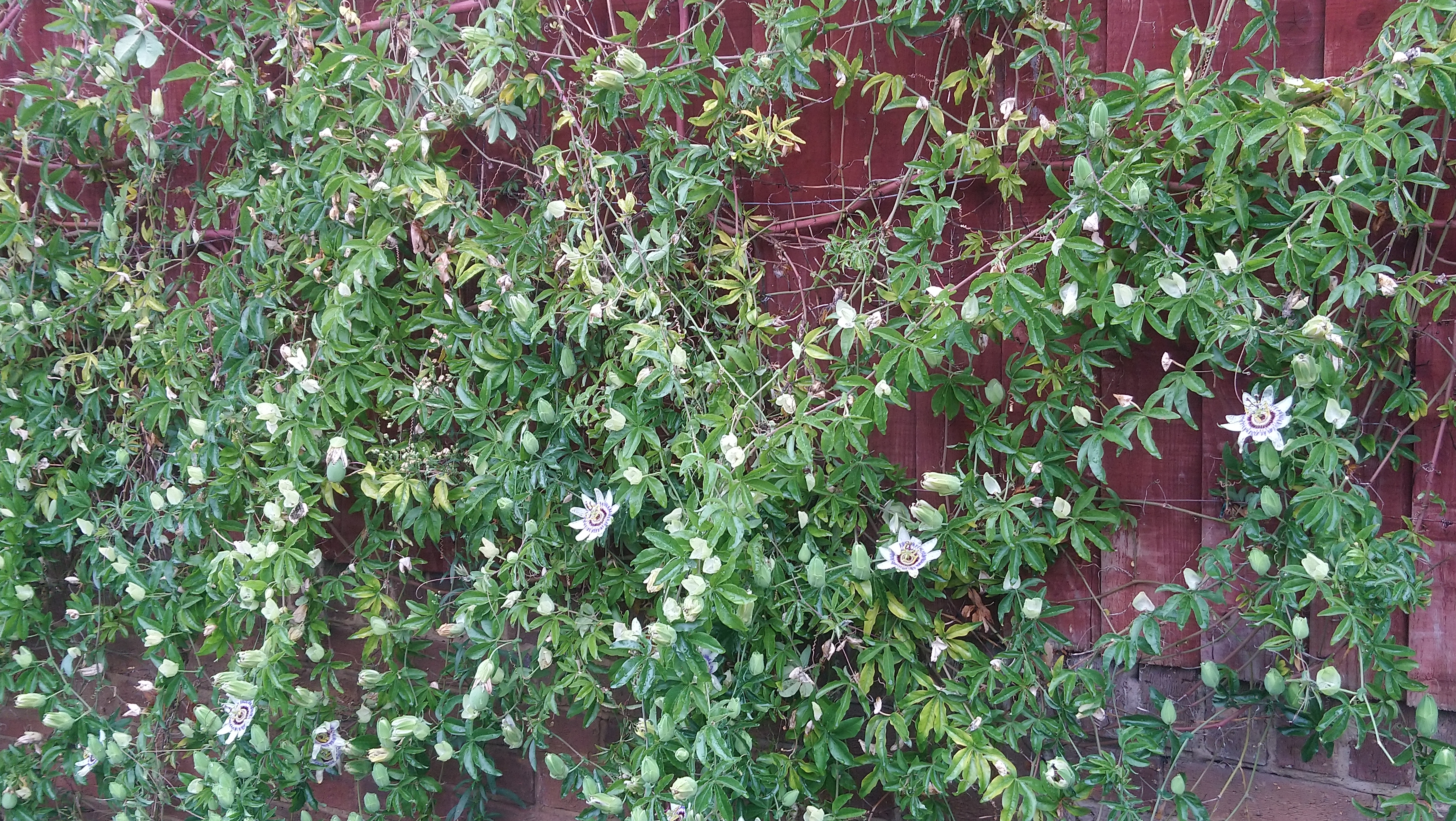

Its star-shaped leaves generally have five lobes and each one has a twining tendril.

The complex flower can be three or four inches in size. The petals are almost white, but the vivid impression of colour comes from a circle of filaments, each one violet, white and blue. Its stamens and stigmas also stand out in the centre.



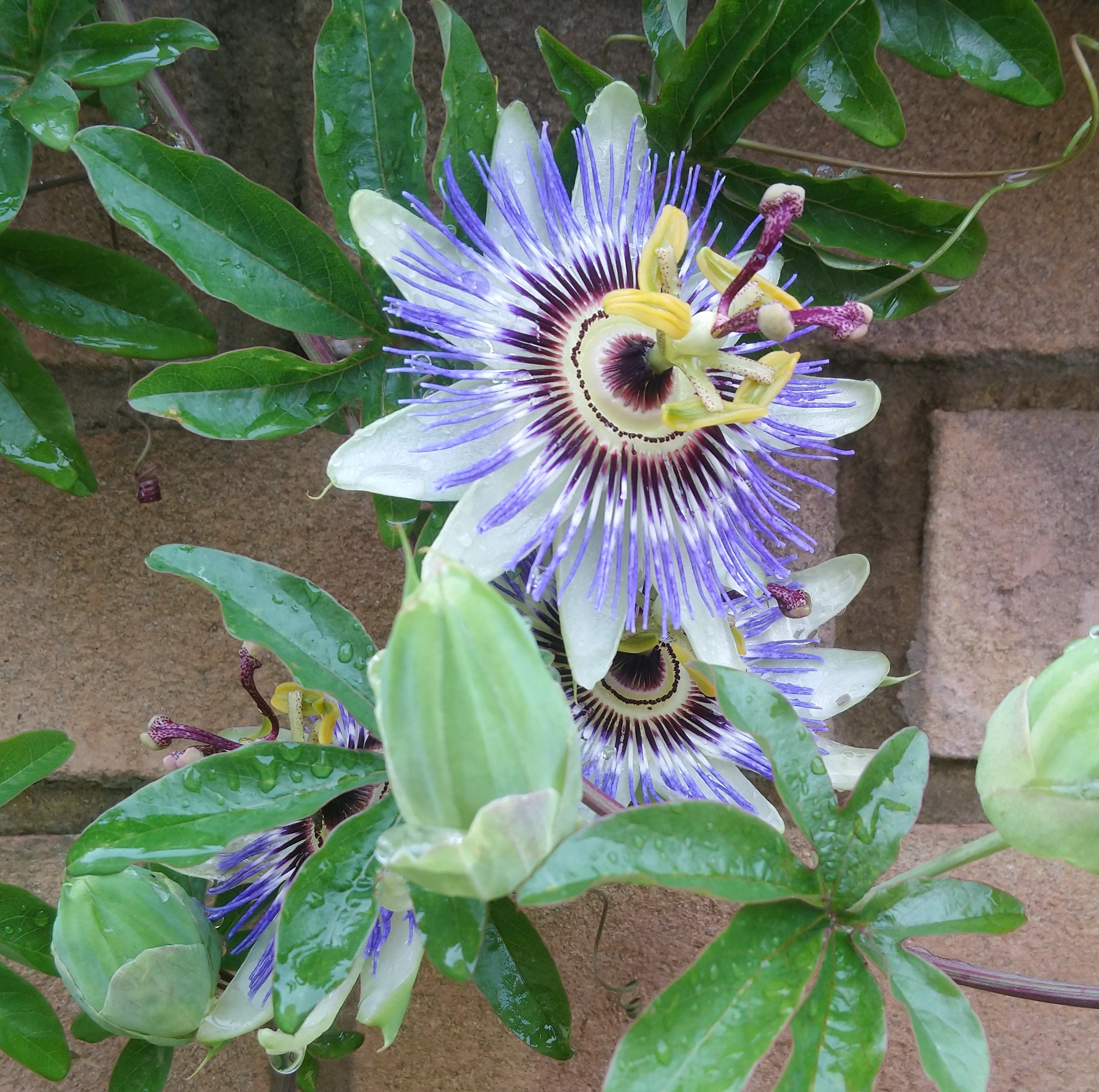
Its fruit is a large orange berry, which is edible.
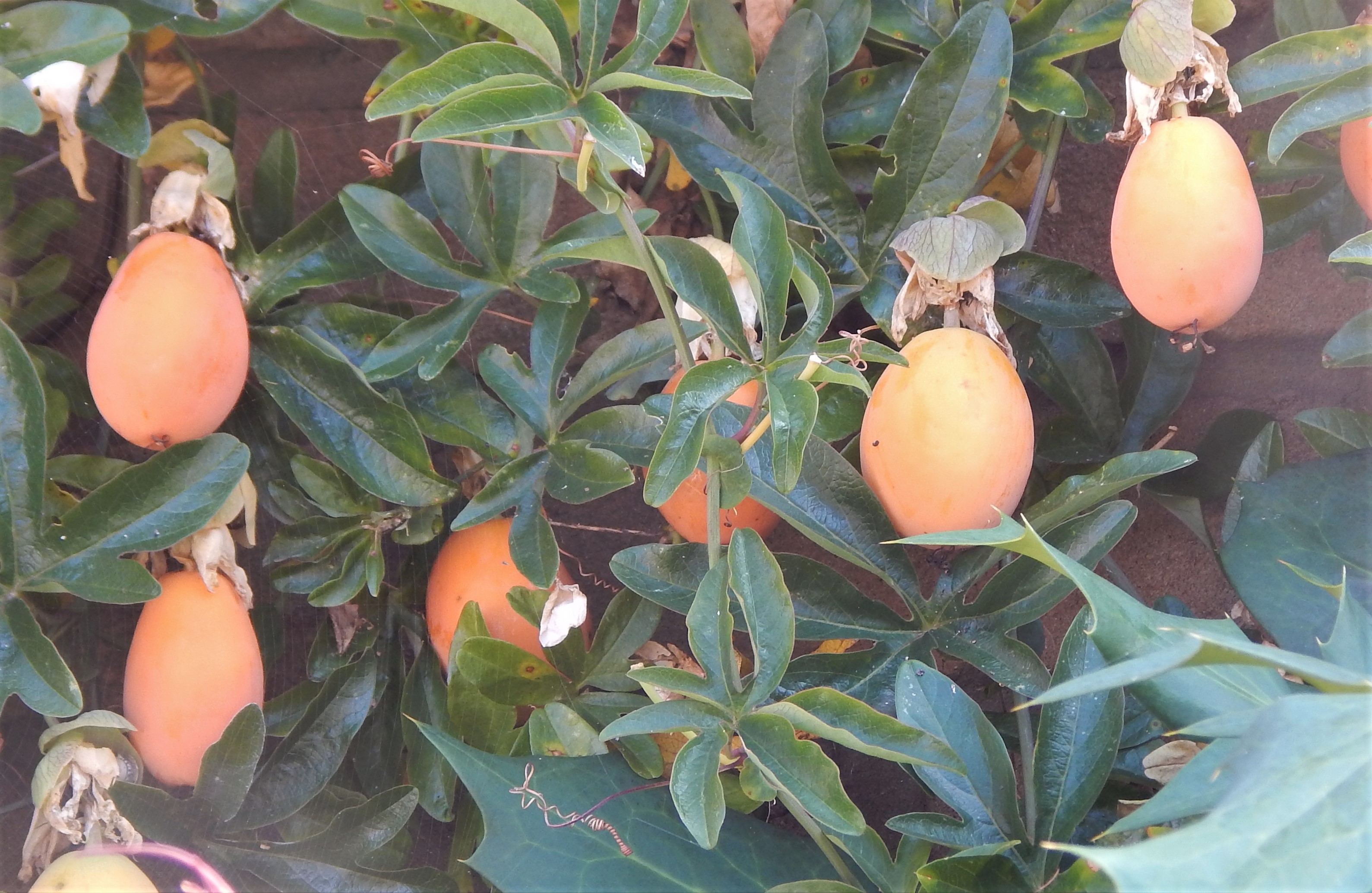

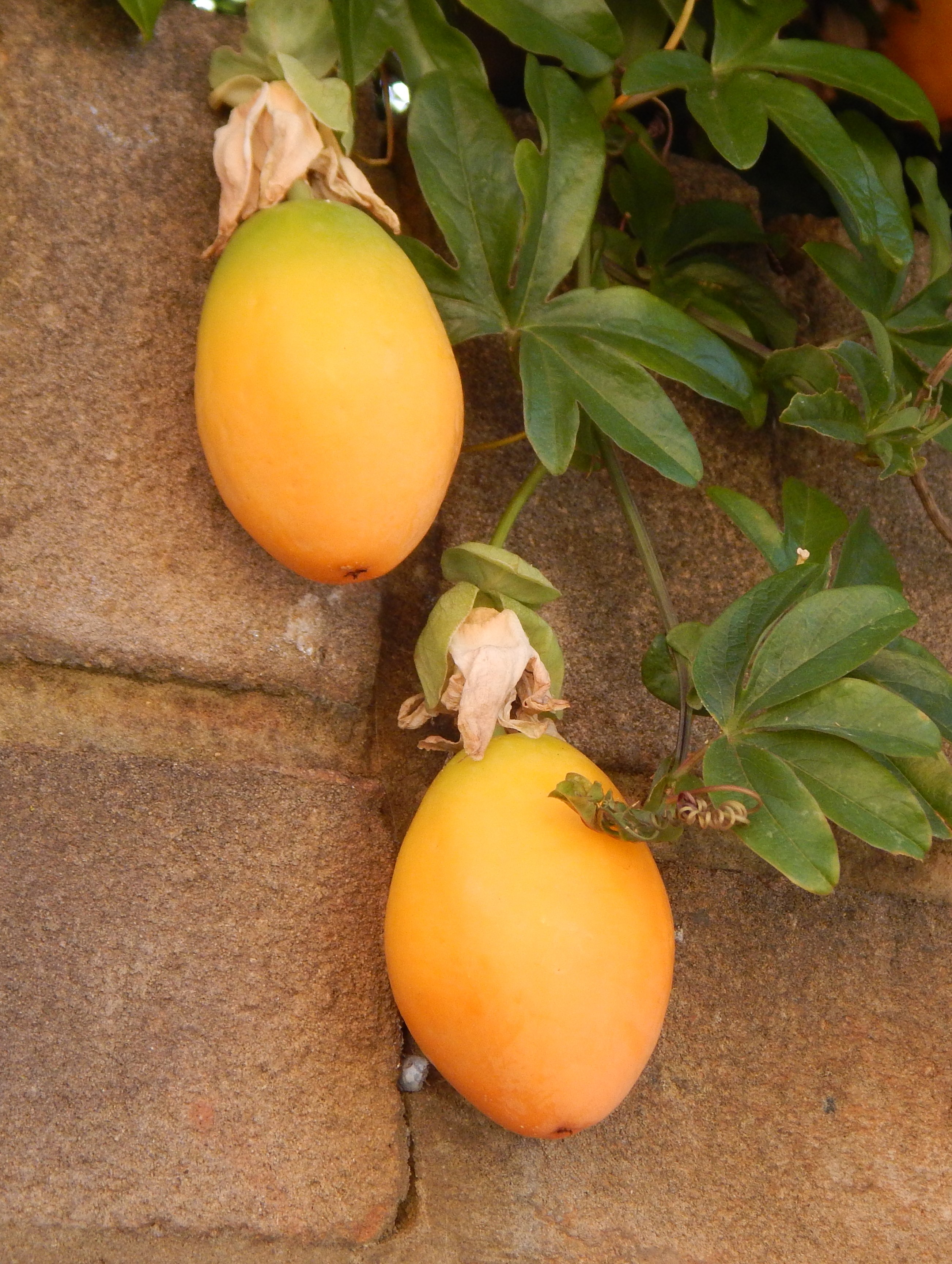

Habitat and use
Passiflora caerulea is native to South America but cultivated elsewhere as a garden plant. Flowers from the cultivars differ in size and colour, some being completely white.
Other Notes
I saw this plant in my walks around town and then discovered it in a few more gardens locally.
I have now discovered one growing on a wall I can see from my house less than a hundred metres away.

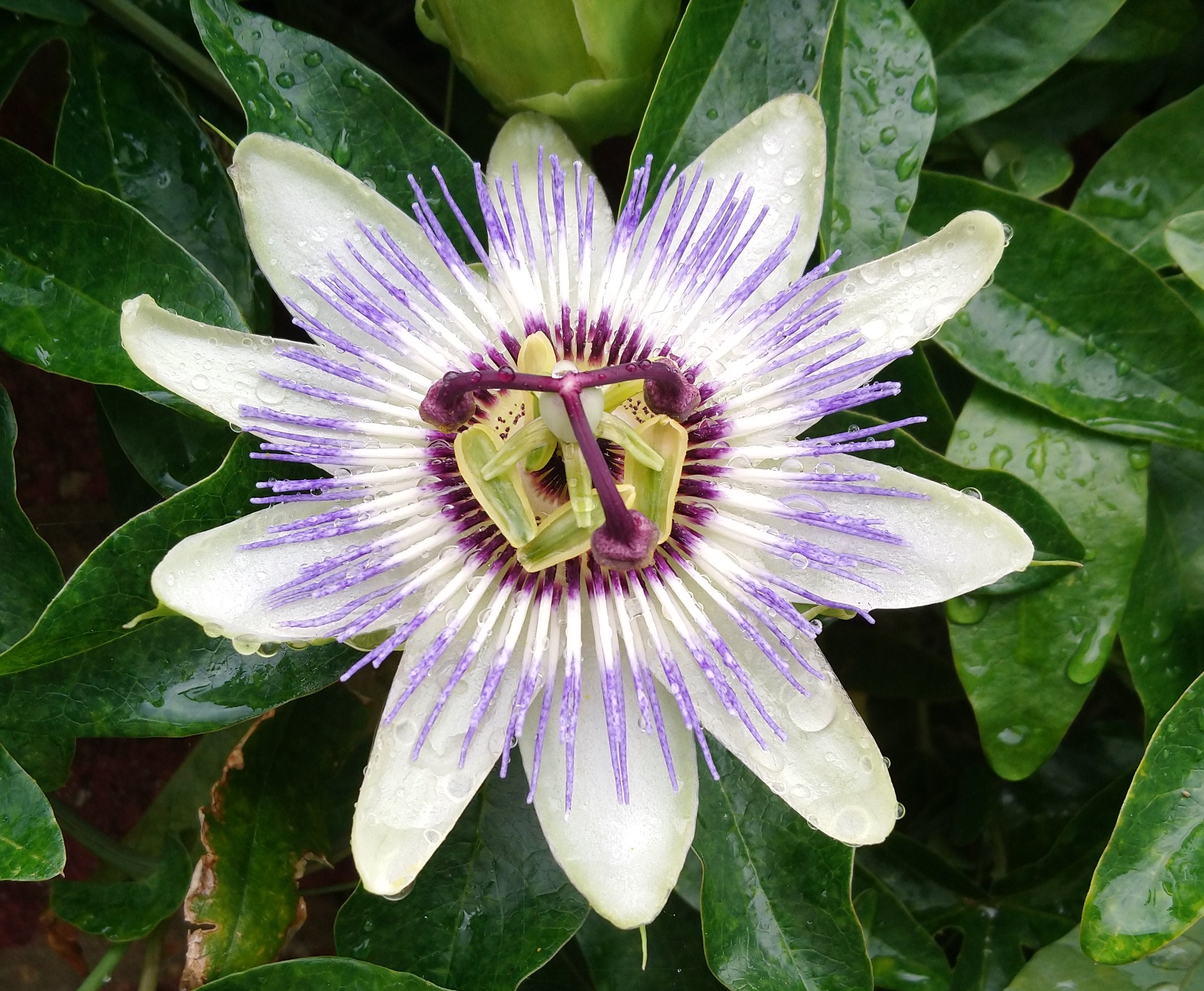
See Also
You are unlikely to see Passiflora edulis, native to Tropical South America, but its fruits are commercially available, as Passionfruit, large berries with sweet, soft interiors. The fruit comes in green and purple varieties and the juice is either sold separately or added to other fruit juice mixtures.
Nothing else closely related to Passiflora is likely to be seen in Britain.
